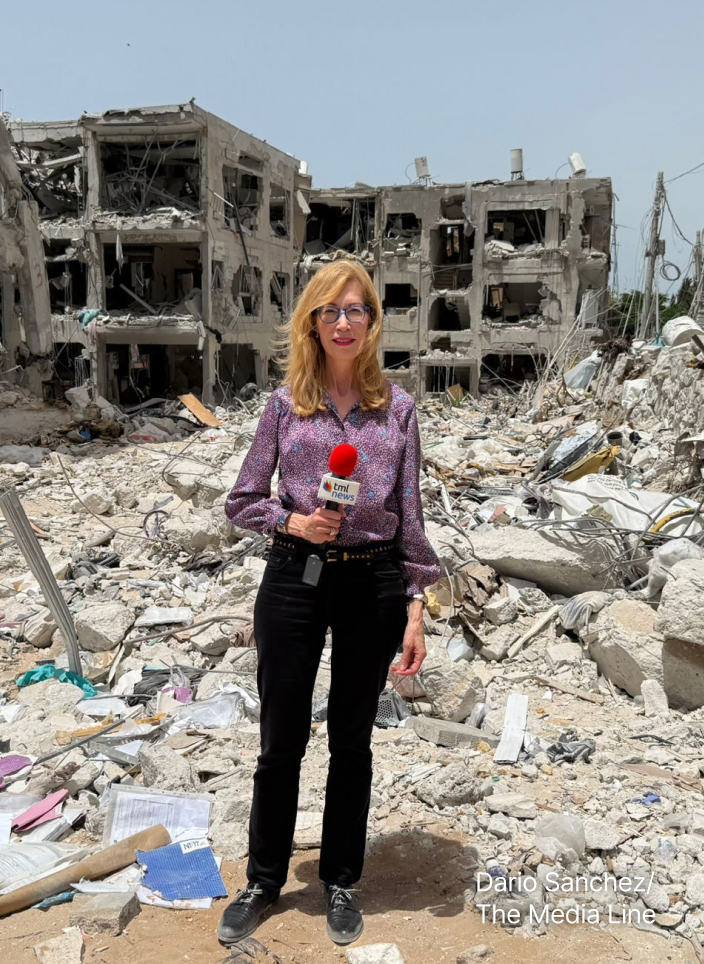After falling short during the Arab Spring, the democratization movement shows signs of making a comeback
In the wake of the Arab Spring, a protest movement spearheaded largely by youth that shook the Middle East to its core, progress towards democratization has in many regional countries stagnated, if not been entirely reversed.
But the discussion regarding the role “the next generation” has to play in fostering democracy was re-ignited last week when Egyptian parliamentarian Dina Abdel Aziz called for “extra grade points” for university students who vote in the upcoming presidential elections.
According to the 2017 Arab Youth Survey, more than 28 percent of the Mideast’s population is between the ages of 15 and 29—a total of nearly 110 million people. Overall, some 60% of the Arab world is under 25-years-old, making it one of the most youthful regions in the world with a median age of 22 compared to a global average of 28.
Nevertheless, Arab youth have long lagged behind in democratic participation, whether with respect to voter turnout, political party affiliation or official government representation. This is in stark contrast to the West, where 24 million youths cast a ballot in the 2016 U.S. elections, an increase of about 5% over 2012, and the 54% of all 18-24-year-olds who voted during the 2017 parliamentary ballot in the United Kingdom, representing a twenty-five-year high.
Give the gift of hope
We practice what we preach:
accurate, fearless journalism. But we can't do it alone.
- On the ground in Gaza, Syria, Israel, Egypt, Pakistan, and more
- Our program trained more than 100 journalists
- Calling out fake news and reporting real facts
- On the ground in Gaza, Syria, Israel, Egypt, Pakistan, and more
- Our program trained more than 100 journalists
- Calling out fake news and reporting real facts
Join us.
Support The Media Line. Save democracy.
Dr. Mohammed Al-Arabiat, President of Generations For Peace, a Jordan-based organization that builds connections between youth and their communities, explained to The Media Line that “many look at the youth [in the Middle East] as an ‘issue.’ When they do that, they implicitly, and sometimes explicitly, deal with youth as a problem that requires a solution. I think there needs to be a paradigm shift,” he elaborated, “a fresh way of looking at youth, not merely as numbers but as stories of very energetic people that have the potential to not only become achievers in their own lives, but also to lift the whole society economically, socially and even politically.”
The reasons accounting for the failure of Mideast youth to gain a foothold in the political process are numerous according to Kari Diener, Program Director at Mercy Corps, a global humanitarian organization that works to empower oppressed communities. “There is a mismatch between the eagerness of youth to participate and make a change and the opportunities they have,” she told The Media Line, adding that this is primarily because “the youth believe that societies view them as irresponsible when in fact they haven’t been given the support and chance to prove themselves. It’s really an issue of trust, often both parties feel like the youth don’t have the skills to engage and therefore learning and education is key.”
In fact, a study titled “The State of Middle Eastern Youth” conducted by Georgetown University’s campus in Qatar, in conjunction with Silatech, found that Arab youth who are kept apprised of political events are nearly three times more likely to engage in the public domain than those who are not interested in or are not privy to news about government.
“The youth are part of a system where political participation is not necessary nor encouraged—it’s not essential to be part of change,” Ali Haddad, a representative of the Jordan Youth Innovative Forum, contended to The Media Line. “Parents don’t want their children to participate in informal activities, especially politics. This is because they have grown up without the democratic system, so now they are afraid of it.”
This political disengagement is made stark by the fact that only 0.3% of all parliamentarians across the Middle East are under the age of 30, evidencing both the reluctance of youth to run for governmental positions and the lack of trust in youth on the part of voters.
However, many analysts believe that it is only a matter of time before the trend is reversed, with social media, in particular, playing a key role in providing youth with a platform through which to voice their political opinions. Tools such as Facebook and Twitter have the potential to harness the power of youth (as exemplified during the Arab Spring, albeit with end-results that may not have been ideal), by enabling the masses to self-organize through the staging of protests or simply by acting as a conduit for the dissemination of information.
To fully foster this potential, Haddad believes that organizations must “start at the grassroots level in communities, where youth can experience and practice leadership. And, to increase voter turnout and participation, the youth need a more transparent system so then they can trust elections and the political process.”
Dr. Al-Arabiat agrees that the impact of such a mobilization could be enormous. “In the post- Arab Spring era, we have seen a regression in the movement towards democratization due to many factors, some of which are regional in nature while others are tied to western policies in the Middle East and the focus on the war on terrorism.
“But we are now seeing the youth becoming less hesitant to make their voices heard,” he concluded. “I think it will take time for that culture to mature in our region. But I am optimistic for the future. The youth are not a problem, they are an opportunity.”
(Benji Flacks is a Student Intern in The Media Line’s Press and Policy Student Program)

